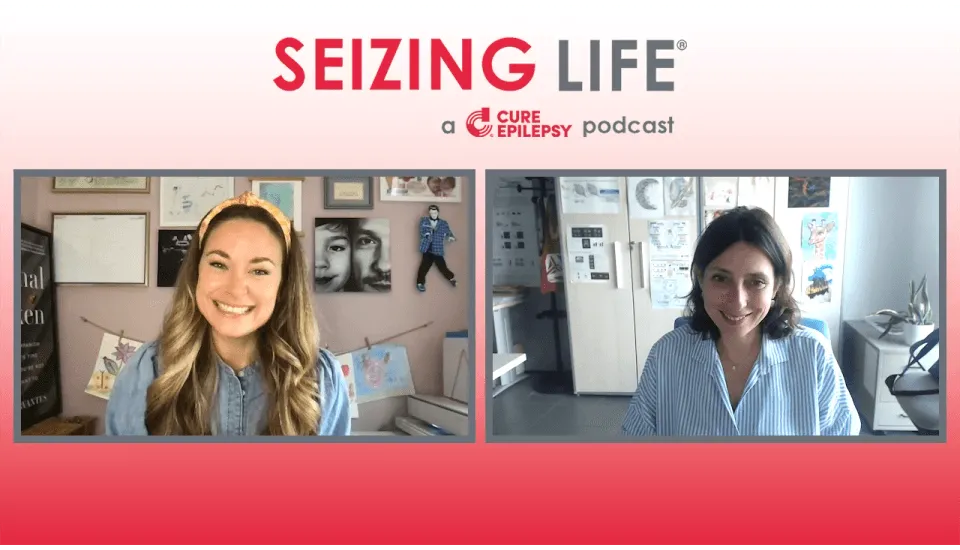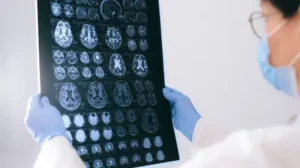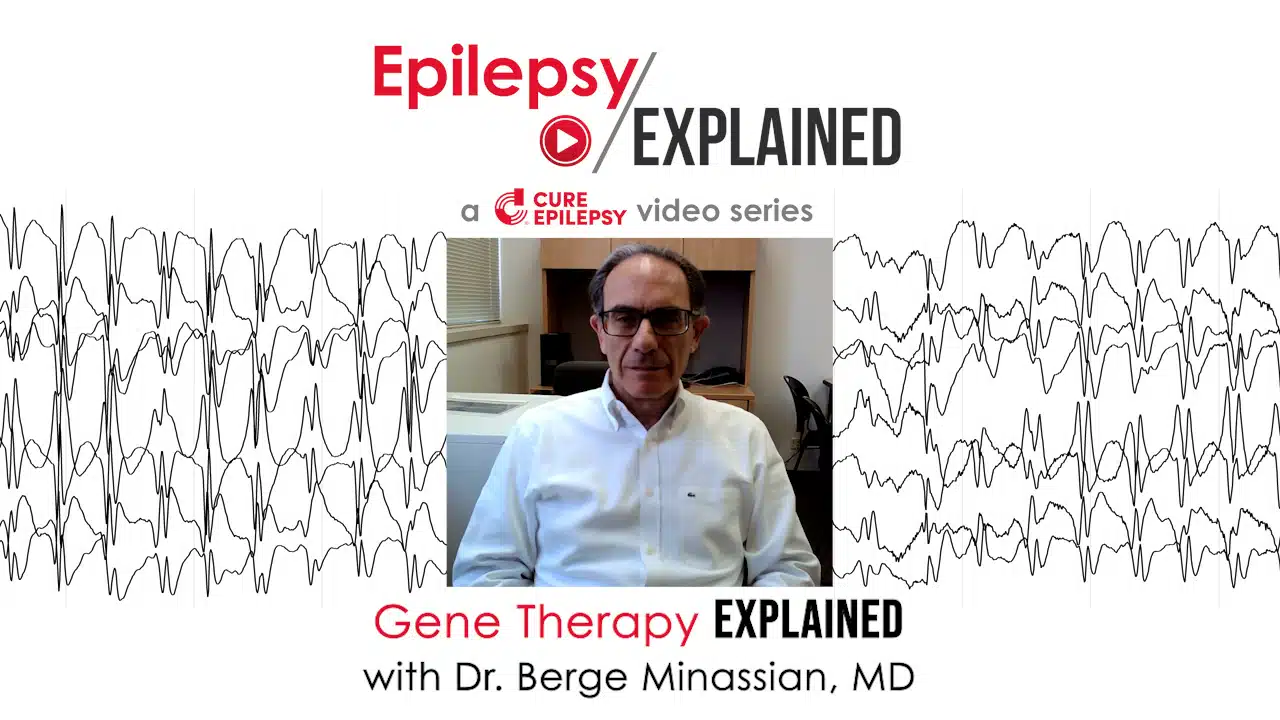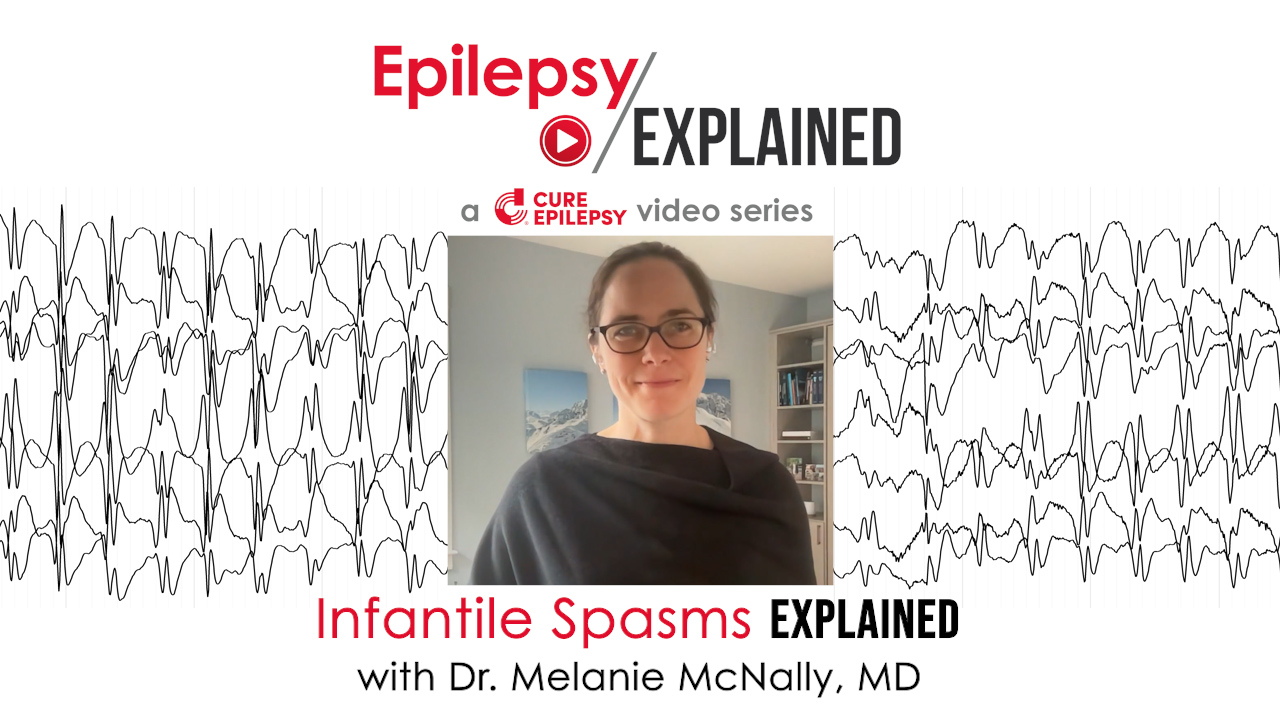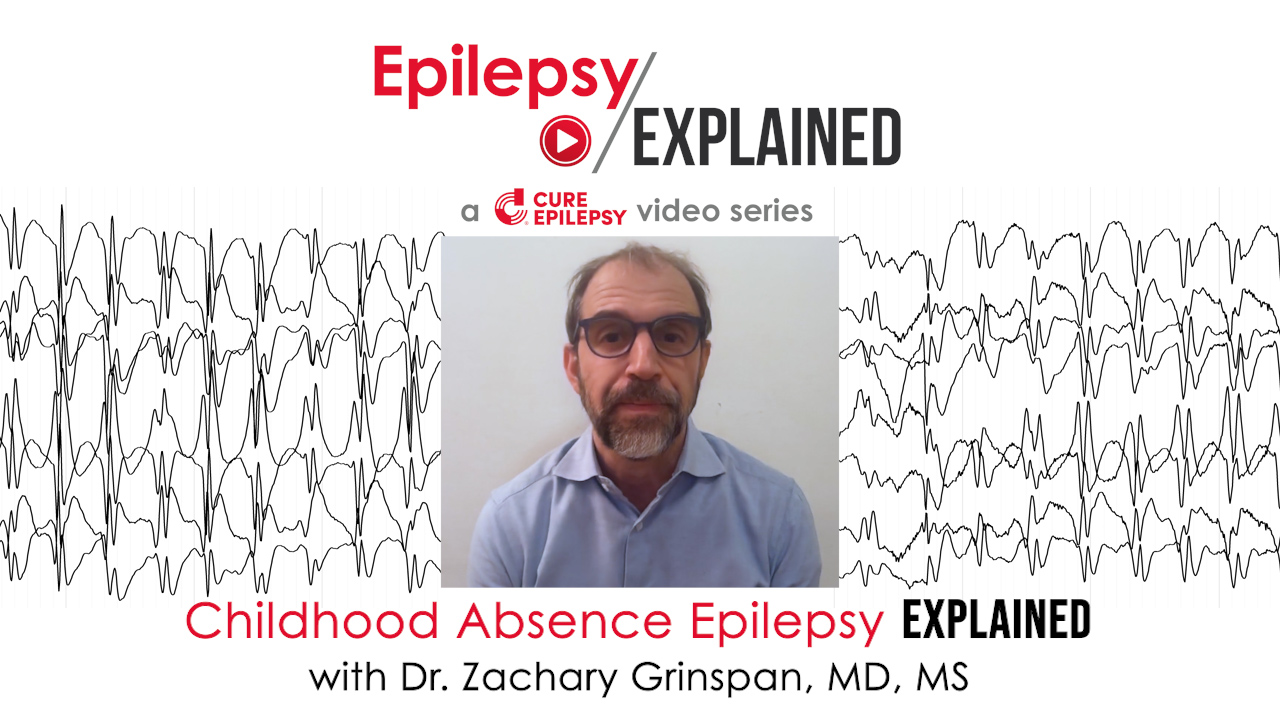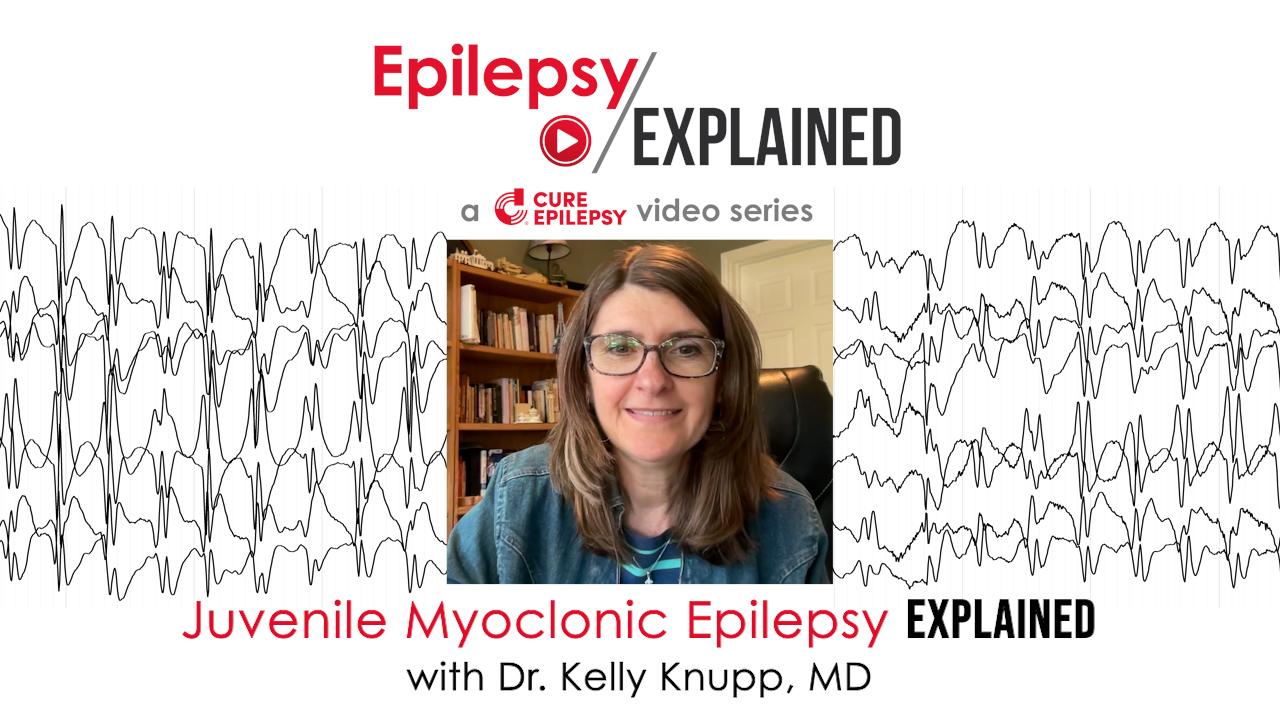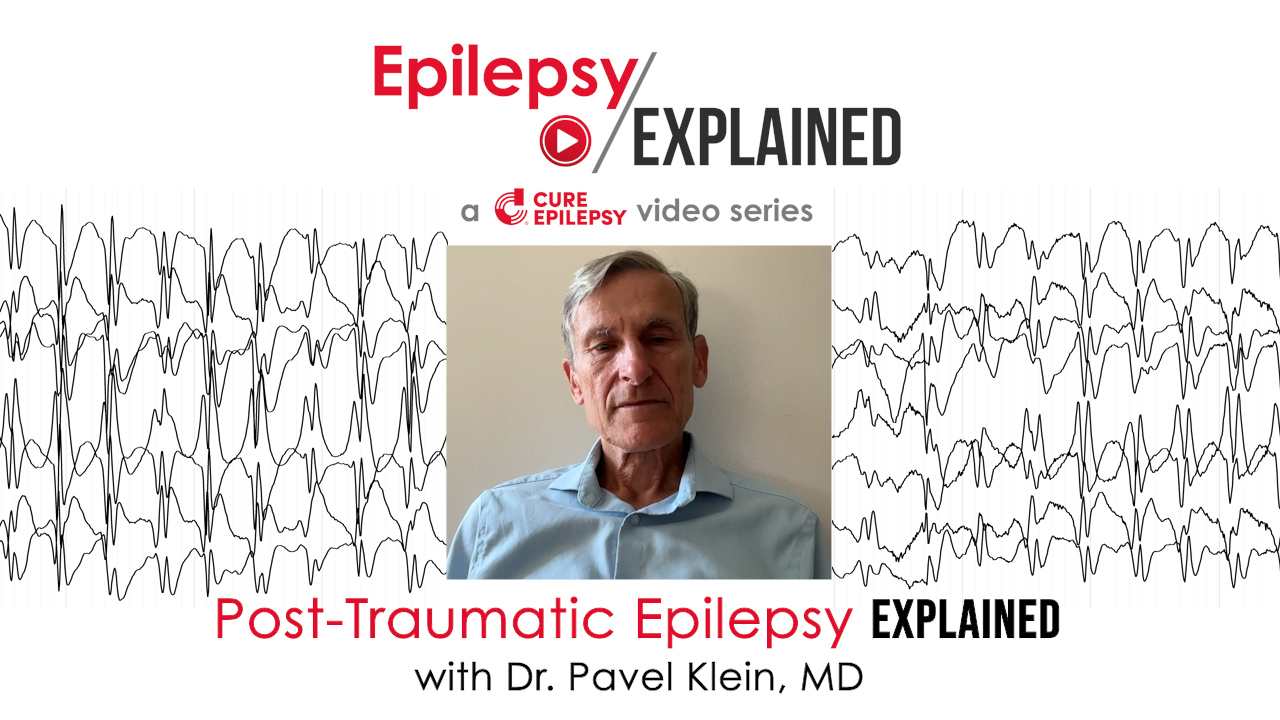Gene Therapy: what it is and how it could benefit those living with epilepsy.
This month on Epilepsy Explained we look at the promising field of gene therapy treatment. Dr. Berge Minassian, Chief of Pediatric Neurology at UT Southwestern Medical Center, explains what gene therapy is and how it works, and discusses the promise it may hold for those living with epilepsy.
In Gene Therapy Explained, Dr. Minassian answers the following questions.
0:16 What is gene therapy and how does it work?
2:17 How can gene therapy be used to treat epilepsy?
4:05 What are the benefits and risks of gene therapy for epilepsy patients?
6:06 Where do you get the genes that are used in gene therapy?
7:09 Can gene therapy actually cure some diseases?
9:04 Is gene therapy a one-time procedure, or is it something that may need to be repeated or re-done to continue to be effective?
9:49 Is gene therapy currently available to epilepsy patients or is it only in clinical trials right now?
Look for new episodes of Epilepsy Explained on the third Wednesday of every month here on our website and on CURE Epilepsy’s YouTube Channel.
Submit questions for future episodes of Epilepsy Explained here.
Episode Transcript
0:16 What is gene therapy and how does it work?
Dr. Berge Minassian:
Gene therapy basically is the replacement of a missing gene. But before I explain how that works, let me just quickly remind everyone that our bodies are composed of many cells that are constantly multiplying during our development and forming the individual that we are. And this development is guided by a genetic code which is present in all our cells. This genetic code is composed of many genes, up to let’s say 30,000 genes, that are individually directing how our various organs, including our brain, develop. So you can see that if any of those genes is missing, there would be a problem in the development of the organ, let’s say the brain, and result in problems. Because the brain is the most complex structure in our bodies, it uses the vast majority of the genes in the genetic code, and there are many opportunities for a gene to be missing and for there to be a problem in the brain. What gene therapy is, like I said, is to replace whichever gene is missing in a particular patient and make their brain whole again. How do we do gene therapy? Because these genes are big, they cannot be delivered in naked fashion just as is. We have to package them into viruses that have the ability to circulate in the body, including in the brain, and deliver the cargo, which is the gene to all the cells. We place the virus inside the cerebrospinal fluid, which is the fluid that surrounds the brain, and the virus will distribute the gene to all the cells. Every cell that gets a delivery of the gene from this virus vehicle is now complete again, whole again, and is no longer missing the gene that was causing the problem.
2:17 How can gene therapy be used to treat epilepsy?
Dr. Berge Minassian:
If we think about epilepsy, the analogy is if you take the whole global human community, we are all part of the one human race, but each of us has a separate culture. We each speak different languages, and we are separate individual, again, cultures that together form the one human race. It turns out that epilepsy, now that we have all these genomic advances, is similar. All the patients who seize, who have seizures, are grouped into this one entity called epilepsy, basically saying that these are patients who have seizures. But if you look deep enough into these cases, in many cases, in most cases, each of these patients or groups of patients have their own mutation that is resulting in their particular condition. And because the brain is an electrical organ, and when something goes wrong in the brain, it tends to seize, these thousands of different genetic diseases present with seizures, and we call these patients epileptics. So epilepsy in the modern era is broken down into its component thousands of individual genetic diseases. So can we help epilepsy with gene therapy? Absolutely, by helping these patients in each individual or each group of them by replacing their particular missing gene.
4:05 What are the benefits and risks of gene therapy for epilepsy patients?
Dr. Berge Minassian:
So the standard treatments for epilepsy until this new era of genetic medicine was basically pills that the patient took, and these pills are small molecules made into a pill and the patient takes the pill. The problem with those types of treatments was that it doesn’t address the problem at the root cause. It just tries to stop seizures, which is great when it works, they have some side effects et cetera, but as we all know in the field of epilepsy, at least a third of our patients don’t respond to these medications. And again, patient has to take the medication usually for a long time, if not lifelong, because we’re not treating the root cause. With gene therapy, we’re treating the root cause, so in principle we are making the patient whole again, making them no longer be a patient, becoming healthy again and not requiring any further treatments. The downside is that replacing a gene means replacing this giant molecule, and to do that, we need to package it in a virus, and because we’re trying to distribute to the whole brain, we need a very large number of viruses. Sometimes we deliver about a quadrillion virus particles to give us a better chance to distribute across the brain. And so you can imagine with these large biologic interventions, there are risks. The immune system could react and there could be other problems. We do this treatment in the intensive care unit with all sorts of monitoring, et cetera. But on the positive side, when it works, if and when it will work more so in the future, these patients will have their problem solved at the root, and they’re no longer patients and they’re back to health.
6:06 Where do you get the genes that are used in gene therapy?
Dr. Berge Minassian:
So the gene, you should think about it as a blueprint. So if you have a blueprint, the blueprint is not what’s becoming the building, for example, that’s based on it. There are architects, engineers, workers who come and read the blueprint and take the information and go construct whatever is being built, let’s say a building. So in genetic diseases, it is the blueprint that’s missing. When we say we replace the gene, we’re replacing this blueprint so that other components of the cell can use that blueprint and build the proteins and the cell and make everything healthy. So where do we get the blueprint? We basically get it from any healthy individual who does not have a mutation in that gene, and we take that and we construct it in the lab, put it in a virus, and deliver it.
7:09 Can gene therapy actually cure some diseases?
Dr. Berge Minassian:
Yes, we strongly believe that it can. Intellectually, if you just think about it, like I said before, when you have a disease that’s a genetic disease, meaning the cause is that a particular gene is missing, it stands to reason that if that gene were replaced, the brain would be whole again and would function normally. We strongly believe that we will get there for brain diseases. In fact, we are so confident because we’ve already achieved that in simpler diseases. Let me give you the example of a disease called spinal muscular atrophy. This is a disease that involves the spinal cord, which is a much simpler part of the nervous system. Scientists have been able to replace the missing gene in that condition, and these kids, who until that time in the entirety of human history were never able to stand up, in fact they would die in infancy because they cannot breathe, now are able to breathe, stand up, develop, and become basically normal people. The next phase of gene therapy work is to do the same for brain diseases. The brain is a much bigger and more complex part of the nervous system. It has at the strict minimum 20 billion brain cells, in fact recent studies are showing it has many more, and so it’s a challenge for us to replace the missing gene in the entirety of the brain. But step by step we’re getting there, and there are many clinical trials in process right now which are already having positive and encouraging results.
9:04 Is gene therapy a one-time procedure, or is it something that may need to be repeated or re-done to continue to be effective?
Dr. Berge Minassian:
The beauty of gene therapy is that it is a one-time treatment. It’s a one and done treatment. Obviously it’s a complex, relatively new treatment, and we’re not there yet in terms of treating most of our epilepsy patients who have genetic diseases. But once we do get there, then it’s a one-time treatment. The gene will express its protein product lifelong, like all the other genes in the brain, and does not require further intervention.
9:49 Is gene therapy currently available to epilepsy patients or is it only in clinical trials right now?
Dr. Berge Minassian:
As far as I know, it’s only in clinical trials right now, but there are numerous clinical trials going on. As I said, epilepsy consists of numerous individual diseases, each with its own genetic defect, and there are many, many dozens of clinical trials going on. So it is not prime time yet. You cannot have a doctor prescribe a gene therapy for epilepsy yet. But we’re getting very close.


